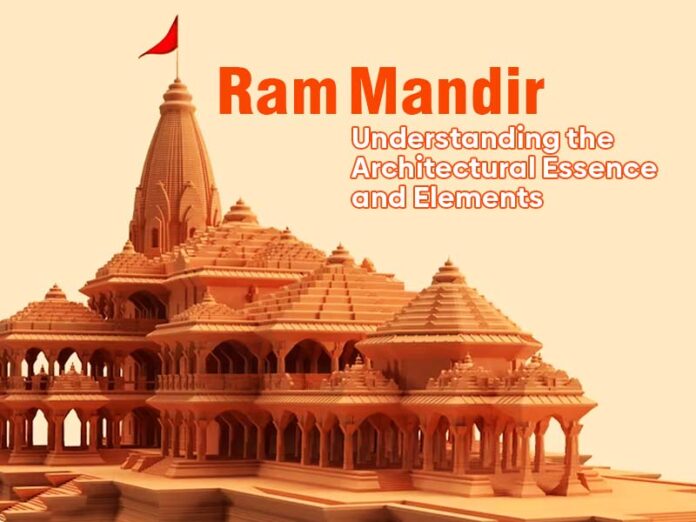As a graphic designer, approaching Ram Mandir designs demands a deep understanding of both religious symbolism and aesthetic principles. It’s about marrying traditional elements with contemporary design sensibilities to create a space that evokes devotion and resonates with worshippers.
The Ram Mandir’s Design aims to achieve a perfect balance between tradition and functionality, creating a space that is both awe-inspiring and welcoming for devotees. It promises to be a testament to India’s architectural prowess and a beacon of faith for generations to come.
Before we commence, let’s catch a glimpse of the enchanting interior of the Ram Mandir!
Let’s start with a few pieces of Information
- The Ram Mandir’s construction began in 2020, drawing immense interest and devotion from Hindus across India and the world. The temple is being built with Rajasthani sandstone, adhering to traditional Hindu temple architecture, particularly the Nagara style.
- The temple’s three floors will each rise 20 feet, culminating in a majestic peak reaching 161 feet. It will boast intricate carvings, sculptures, and mandalas, showcasing the rich artistry of India’s temple-building heritage.
- Upon completion, the Ram Mandir is poised to be one of the largest and most magnificent Hindu temples in the world, attracting millions of devotees annually. It aspires to be not just a place of worship, but also a cultural and spiritual center, fostering devotion, education, and community.

Here’s how we would break down the design considerations:
- Symbolism: Researching the rich tapestry of Hindu mythology and Ramayana, especially elements associated with Lord Rama, Sita, and Hanuman, becomes crucial. Incorporating these symbols subtly yet effectively through motifs, patterns, and sculptures would add layers of meaning for devotees.

- Modern Context: Balancing tradition with contemporary design sensibilities is important. Consider natural light, ventilation, accessibility, and sustainable materials to create a functional and inviting space that resonates with modern worshippers.
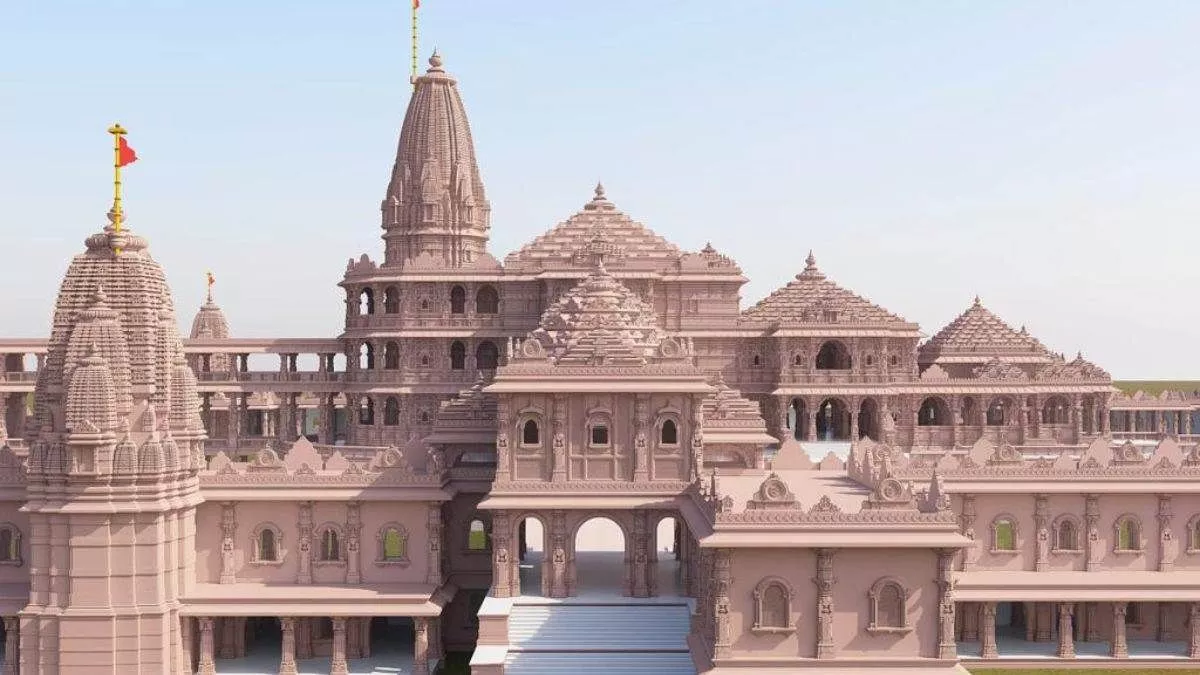
- Architectural Heritage: Studying existing Hindu temples, particularly ancient and regional styles, can offer valuable insights into traditional construction techniques, proportions, and ornamentation. However, incorporating these elements organically, avoiding mere imitation, is key.

Visual Elements to Consider
- Color Palette: Choosing colors with specific symbolic meanings in Hinduism, like saffron, white, red, and green, can create a spiritually charged atmosphere. Additionally, employing color gradients and subtle variations can add depth and visual interest.

- Typography: Selecting Devanagari fonts with appropriate weight and style is crucial for scriptural verses and signage. Consider incorporating calligraphic elements to add elegance and a touch of the traditional.
- Patterns and Motifs: Geometric patterns like mandalas and lotus flower motifs are staples of Hindu temple art. Using them strategically, in floor tiles, wall murals, or decorative panels, can add visual rhythm and texture without overwhelming the space.

- Sculpture and Murals: Integrating sculptures of deities, mythical creatures, and scenes from Ramayana can enhance the devotional experience. Similarly, murals depicting significant events or stories can add narrative depth and visual storytelling.
Ram Mandir Architecture and Vastu Purusha Mandala
The Ram Mandir’s design embodies the profound spiritual and architectural wisdom of the Nagara temple tradition. By integrating the cosmic principles of Vastu Purusha Mandala, the architects have created a space that is not just magnificent to behold but also resonates with deep spiritual significance for countless devotees. The Ram Mandir meticulously adheres to the principles of the Vastu Purusha Mandala. Here’s how:
- Garbhagriha: The innermost sanctum sanctorum, housing the idol of Lord Rama, is located at the mandala’s central point, where the cosmic being’s navel resides. This symbolizes the deity’s centrality in the universe.
- Mandapas: Four pillared halls representing different directions and functions are situated around the Garbhagriha, corresponding to the arms and legs of the cosmic man.
- Shikhara: The towering main spire rises from the Garbhagriha, reflecting the cosmic man’s head and connecting the earthly temple with the celestial realm.
- Proportions and Orientation: Every element, from the height of the shikhara to the location of doorways, adheres to specific ratios and auspicious directions prescribed by the mandala.
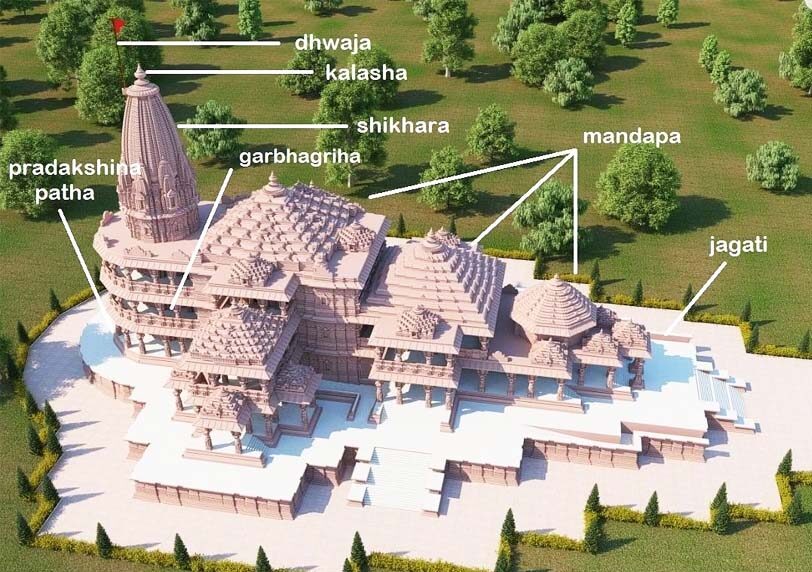
By aligning the temple with Vastu Purusha Mandala, the architects aim to:
-
- The Ram Mandir becomes a sacred space reflecting the cosmic order, fostering a sense of connection between the individual and the divine.
- The precise positioning of elements is believed to channel positive cosmic energies, creating a spiritually and physically vibrant environment.
- The harmonious alignment encourages deep meditation and connection with the divine, making the Ram Mandir a true pilgrimage destination.
Material and Techniques used in Ram Mandir
- Traditional Materials: Incorporating stone, marble, and wood, materials commonly used in temple construction, can evoke a sense of timelessness and authenticity. However, exploring sustainable alternatives and modern construction techniques for longevity and functionality is essential.
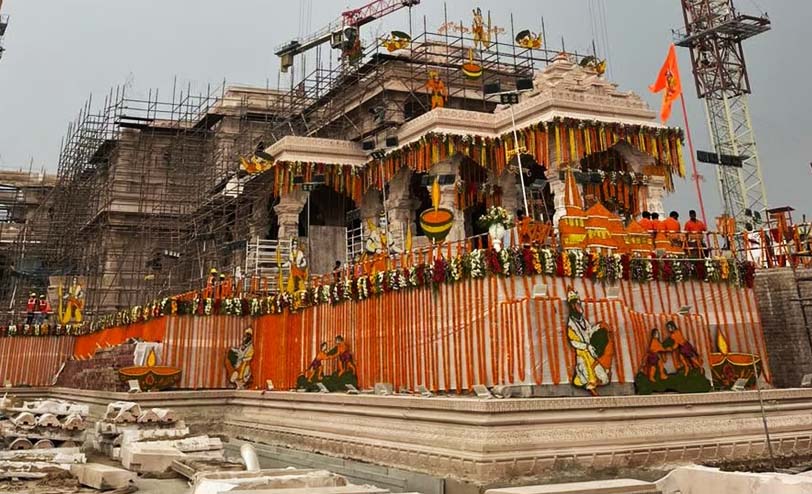
- Respect and Sensitivity: Approaching the design with utmost respect for the spiritual significance of the Ram Mandir is paramount. Every element, from material selection to artistic expressions, should be carefully considered to avoid any insensitive or inappropriate interpretations.
- Lighting and Illumination: Employing natural light through strategically placed windows and skylights is ideal. Additionally, using layered lighting, from soft ambient to focused spotlights, can highlight architectural features and sculptures, creating a sense of awe and reverence.

- Community Consultation: Engaging with the temple’s dedicated community, religious leaders, and scholars is crucial to understanding their needs, aspirations, and sensitivities. Their input can guide the design process and ensure the final result resonates with all stakeholders.
Modern Artistic Interpretations of Ram Mandir
The Ram Mandir in Ayodhya, India, holds immense significance for Hindus as the birthplace of Lord Rama. While the physical structure itself is a marvel of ancient architecture, contemporary artists have reimagined its essence and symbolism in diverse and thought-provoking ways.
Here’s a glimpse into some of these modern artistic interpretations:
- Digital Art: Artists are using digital tools to create fantastical, dreamlike renditions of the Ram Mandir. These artworks often blend traditional motifs with futuristic elements, reflecting the temple’s enduring relevance in the modern world.
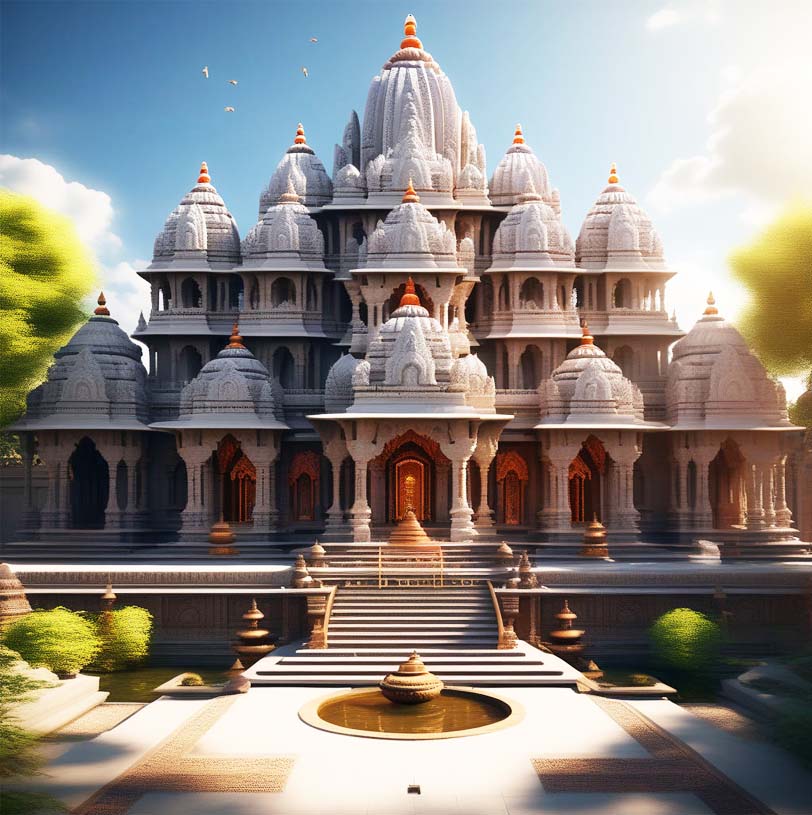
- Fusion of Styles: Consider blending traditional Indian art forms with elements of modern art movements like minimalism or pop art, creating a visually striking and thought-provoking experience.
- Abstract Murals and Sculptures: Commission contemporary artists to create abstract interpretations of Hindu stories and symbols, adding a unique and modern touch to the temple’s interior.

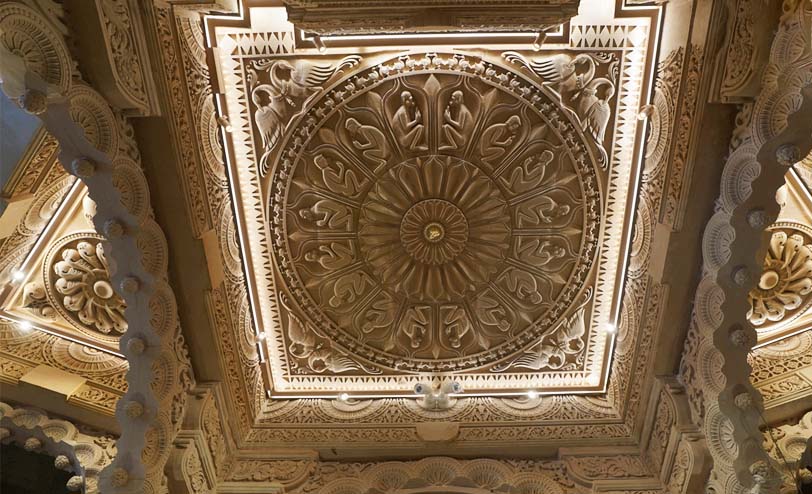
- Interactive Art Installations: Integrate interactive art installations that respond to movement or touch, inviting visitors to engage with the space in a unique way.
Community-Oriented Design of Ram Mandir
The Ram Mandir in Ayodhya has the potential to be not just a place of worship, but a vibrant hub for the community. When considering its design, incorporating elements of community-orientedness can strengthen its social fabric and create a space that fosters harmony and connection.

Here are some potential approaches:
- Multifunctional Spaces: Design multipurpose spaces that can be used for prayer, community gatherings, educational workshops, or even cultural events.
- Community Gardens and Open Areas: Create green spaces with native plants and seating areas for people to relax, socialize, and connect with nature.
- Collaboration with Local Artisans: Incorporate locally sourced materials and involve local artisans in the construction and decoration of the temple to support the community and give the project a unique character.
A Few Rarely Known Facts About Ayodhya’s Ram Mandir
The Ram Mandir is a complex and multifaceted project with deep religious, historical, and social significance. Understanding its facts helps us appreciate its importance and potential impact on India’s future.
- Construction began in 2020 and is expected to be completed by 2025.
- The site housed the Babri Masjid, a 16th-century mosque, until its demolition in 1992 by Hindu nationalists. This event triggered communal riots across India.
- The temple will be a grand structure, 360 feet long, 235 feet wide, and 161 feet tall, making it one of the largest Hindu temples in the world.
- It is being built in the Gurjara-Chaulukya style of Nagara architecture, characterized by intricate carvings and a multi-storeyed shikhara (spire).
- The central temple will house the idols of Lord Rama, Sita, Lakshmana, Bharata, and Hanuman.
- Surrounding the central temple will be six smaller shrines dedicated to other deities. The complex will also include a museum, a library, and other facilities for pilgrims.
Wrapping Up
Creating the Ram Mandir design is a unique opportunity to blend artistic expression with spiritual intent. By thoughtfully navigating the considerations mentioned above, a graphic designer can contribute to a space that inspires devotion, fosters inclusivity, and stands as a testament to faith and architectural beauty for generations to come.
We hope this article will be helpful to you. Stay tuned for upcoming articles.
READ MORE: Master the Technique: Designing Billie Eilish AI Art!
If you like our article, please subscribe to BsyBeeDesign for the latest updates on design. If we forget anything, share your creative ideas in the comments section.
Follow us on Facebook, Linkedin, Instagram, Pinterest and YouTube.



























